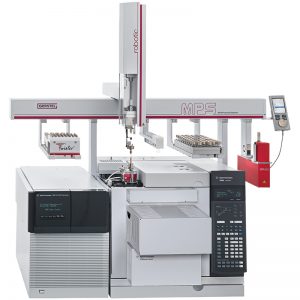The analysis of volatiles in solids is a common analytical problem. Examples include volatile aroma compounds in foods (coffee, tea, herbs), residual fragrances from soaps and fabric softeners on textiles, and volatiles in polymer resins, films and plastic products. When high sensitivity analysisis needed, many of these sample types can be analyzed by direct thermal desorption with cryotrapping before the GC column.
A wide variety of sample types can contain significant levels of water. This poses significant challenges when doing direct thermal desorption and cryotrapping for analysis of volatiles, since water can accumulate and freeze in an inlet or at the head of a column. Introduction of significant levels of water into the GC column can degrade chromatographic performance and shorten column lifetime.
There are several strategies that are useful to reduce the introduction of water into a GC when doing thermal desorption. These range from offline thermal extraction with trapping of volatiles on adsorbent beds to incorporating drying steps into the thermal desorption process itself. Estimating the amount of water that can be eliminated
with each of these approaches is a challenge.
Volatiles in solid samples containing up to 90% water were analyzed by direct thermal desorption incorporating different drying strategies. Offline thermal extraction utilizing Tenax TA™ adsorbent was the most effective approach for eliminating large amounts of water while effectively retaining low boiling analytes. Small amounts of water (tens of milligrams) can be eliminated from samples by using Tenax TA™ packed inlet liners cooled to 20-40°C. General guidelines for choosing appropriate steps for eliminating different levels of water are summarized.



